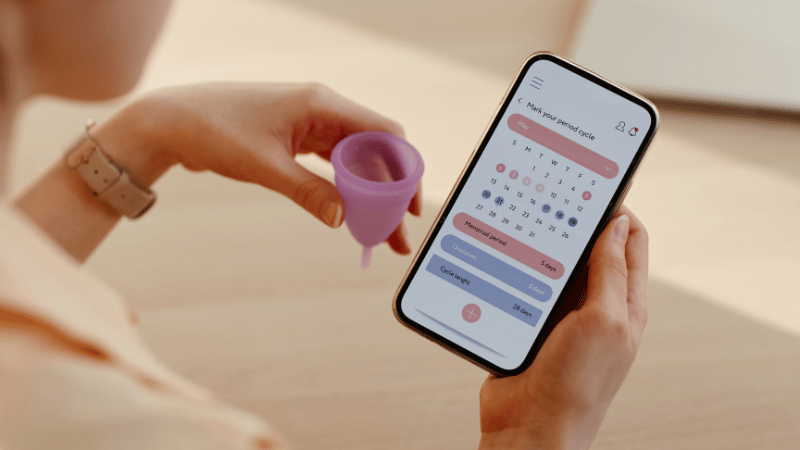
Uterine fibroid embolization (UFE), a non-surgical, outpatient procedure, treats fibroids by blocking their blood supply, allowing them to shrink over time. But what happens if your period starts just before or even on the day of your scheduled UFE procedure? It’s a common concern. Menstrual cycles don’t always follow a predictable schedule, and with cycle lengths ranging from 21 to 35 days, timing can be tricky. This blog explains how menstruation can potentially affect your procedure, whether rescheduling is needed, how your period may or may not impact your UFE, and what to expect afterward.
Should You Reschedule UFE If You’re on Your Period?
In most cases, there’s no need to reschedule your UFE procedure during menstruation. Medical teams are trained and well-equipped to perform the procedure, regardless of your menstrual status, so there is no need to delay treatment.
It’s common practice for medical professionals to perform treatments during menstruation. If bleeding is especially heavy or you are experiencing more intense symptoms, inform your team beforehand. They can take steps to ensure you’re as comfortable as possible during the procedure.
Is It Safe to Have the UFE Procedure During Your Period?
Uterine fibroid embolization is safe to perform during menstruation, with most interventional radiologists conducting the procedure regardless of the stage of your cycle.
Menstruation does not increase the risk of infection or interfere with the fibroid embolization process. UFE targets the uterine arteries that supply the fibroids, not the endometrium, which is the uterine lining that sheds during your period. Whether performed during or outside of a menstrual cycle, the technique and outcomes of UFE remain the same.
What to Expect During the UFE Procedure While on Your Period
The uterine fibroid embolization procedure is a minimally invasive, non-surgical treatment done by an interventional radiologist.
Below is a brief overview of how UFE works:
- A radiologist inserts a catheter through the groin (femoral artery) or wrist (radial artery).
- Using imaging guidance, the interventional radiologist navigates the catheter to the uterine arteries.
- Through the catheter, tiny particles are released to block the blood supply to the arteries feeding the fibroids.
- Without blood flow, fibroids shrink and die, relieving unwanted symptoms over time.
The process of uterine fibroid embolization does not change based on your menstrual cycle. Some additional cramping is normal after UFE, and if you’re on your period, you may feel both menstrual cramps and post-procedure discomfort at the same time. This overlap can make cramping feel more intense than usual, but it’s typically temporary and manageable with over-the-counter medication or what your care team recommends.
Most patients return home on the same day of treatment and can begin regular activities after one to two weeks of recovery time. Schedule a consultation with a fibroid specialist to determine if UFE is the right treatment option for you.
Schedule An Appointment Online Now
Will Uterine Fibroid Embolization Impact Your Menstrual Cycle?
Undergoing UFE during your period doesn’t impact the effectiveness of the UFE procedure, but it can cause some changes in your cycle.
After UFE, it’s normal to experience short-term changes in your cycle. The first period after UFE might be heavier. It’s also common for irregular periods to occur in the first few months post-treatment.
As fibroids shrink, most patients start having lighter, shorter periods with less pain, improved energy, and relief from pressure-related symptoms like frequent urination or discomfort during sex.
Choosing the Right Medical Team for Your Fibroid Treatment
Having your period shouldn’t stop you from getting the fibroid relief you deserve. UFE can be performed safely during menstruation, as the process is designed to be as comfortable and minimally disruptive as possible.
For individuals scheduled for UFE during menstruation, contacting the fibroid specialist performing your procedure beforehand can help address concerns and ensure you are as comfortable as possible during the process.
Our experienced interventional radiologists at USA Fibroid Centers create personalized treatment plans, with care tailored to each patient’s specific symptoms and needs. Even if you have uterine fibroid embolization during your period, the procedure can be performed safely and effectively.
For any concerns about scheduling, UFE, or additional questions, contact the team at USA Fibroid Centers. Our specialists are committed to making the process as smooth and stress‑free as possible.





